Developing Visual Motor Skills in Children
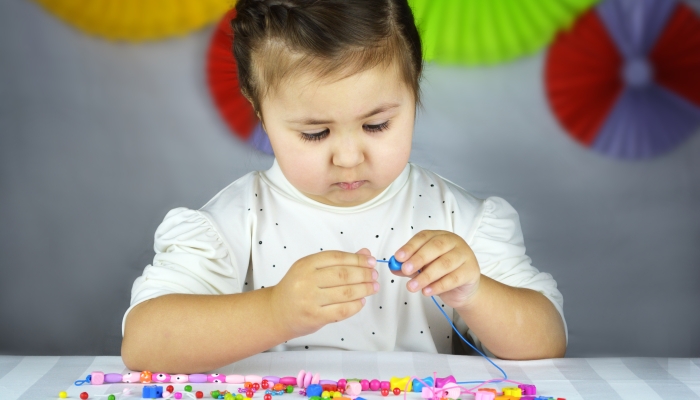
- Visual motor skills make everyday tasks possible.
- Activities targeting visual motor integration development can help your child improve their motor skills.
- Occupational therapy is available for kids struggling with visual motor skill development.
Visual motor integration is an essential skill that all children need to develop. Your child’s visual system includes their eyes and brain. These need to work together, ensuring your child can perform daily tasks.
Playing, moving, writing, and solving problems are some activity examples where visual motor and visual perceptual skills are handy.
Why Are Visual Motor Skills Important?
Daily activities need visual input for successful completion. Without this critical skill, children have trouble functioning properly. Combined with fine and gross motor skills, visual motor skills help children perform small and large tasks.
What Are Visual Motor Skills?
Simply put, visual motor skills are what helps children interpret visual information and perform movements based on what they see.
Development of these skills begins at birth. Babies start observing, recognizing, and using visual information once they open their eyes to get a sense of the new world around them. This includes recognizing and moving towards their milk source, grasping a finger, and tracking with their eyes.
As your child ages, their visual motor skills become more refined through exposure and practice.
Visual motor skills include:
- Visual Figure Ground: This is a child’s ability to single out objects in crowded backgrounds. It’s helpful when children need to focus on specific people or things, locate items, and complete tasks like reading.
- Visual Scanning: By observing their environment and rapidly processing what they see, children can search for and identify information and objects with a quick scan.
- Visual Memory: Children learn by remembering the things they see. Visual memory helps them recognize shapes, objects, words, and patterns they’ve seen before.
- Visual Spatial Awareness: This skill makes kids aware of how everything relates to one another and themselves. It’s helpful when they learn to use their body parts or figure out how things work. Children need this processing skill to learn how to write, tie their shoes, and build puzzles.
- Visual Discrimination: Children need visual discrimination skills to identify subtle differences between two or more objects, pictures, or words. These differences include color, shape, size, texture, spelling, and position.
- Visual Closure: To fill in the blanks, kids need visual closure skills. This will help them identify incomplete information in its entirety. Besides using this skill for academic purposes, children need it to recognize partially hidden objects.
- Eye-Hand Coordination: With proper eye-hand coordination, children can perform activities that require the simultaneous use of their eyes and hands. This includes getting dressed, eating, catching a ball, and playing an instrument.
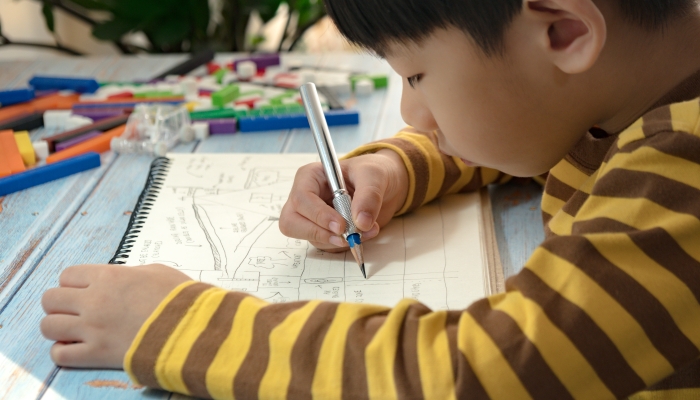
What To Do If Your Child Has Difficulties With Visual Motor Skills?
Babies develop visual motor skills independently, but as with other milestones, some children face difficulties. If you notice any red flags, you should help them. Keep an eye out for these signs:
- Poor eye-hand coordination
- Clumsiness
- Difficulty seeking out objects
- Inability to identify shapes and outlines
- Lack of pencil control
- Trouble sorting or matching items
- Letter or number reversal
- Right-left awareness
Younger children can typically improve their visual motor skills through frequent observation, play, activities, and practice. Older kids who still have trouble might have visual problems.
If you suspect vision problems, you should visit your child’s occupational therapist. After an assessment, they’ll refer you and your baby to a developmental optometrist if needed. Some children will need corrective lenses, but you might be able to get your child’s visual motor integration skills on track with vision therapy or at-home activities alone.
How To Improve Visual Motor Skills
Children with visual motor difficulties need extra exposure to develop their visual processing skills.
Visual motor integration activities will help your child improve their visual perceptual skills, motor skills, and academic performance. These activities range from simple to complex and assist young, and older children develop their ability to digest visual information and perform accordingly.
You should chat with an occupational therapist to create a focused program if your kid struggles with specific visual motor activities like building blocks, playing sports, or writing.
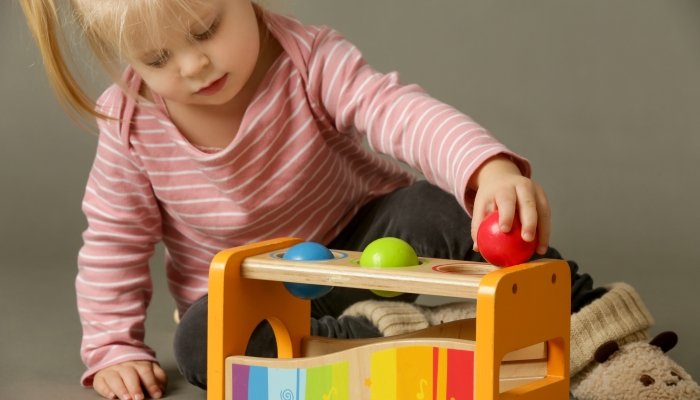
Visual Motor Activities
Simple at-home activities can develop and improve your child’s visual perception and response. Depending on what your kid needs help with, try these age-appropriate activities!
Activities for 0 to 5-Month-Olds
- Tracking: Move a rattle or soft toy in different directions to encourage visual tracking.
- Reaching: Dangle pipe cleaners or ribbons above and in front of your baby to develop their ability to reach.
Activities for 6 to 11-Month-Olds
- Crawling: Get your child interested in moving with crawling toys. These and some movement games will develop eye-hand coordination.
- Hide and Seek: Play peek-a-boo and hide small objects while your child watches you. Both are great eye exercises!
Activities for 12 to 17-Month-Olds
- Scribbling: Start developing handwriting skills by allowing your child to scribble with easy-to-grip crayons.
- Rolling Balls: Roll big and smaller balls to develop visual attention. You should roll the balls to your baby and encourage them to mimic this motor action towards you.
- Read Books: It’s never too early to make reading part of your child’s development. Turning pages of a bubble or board book will improve your child’s visual motor skills, speech, and imagination.
Activities for 18 to 23-Month-Olds
- Build Blocks: Kids enjoy building blocks, and it’s a great visual motor integration activity. It improves fine motor skills, eye-hand coordination, and shape identification.
- Mix and Match: You can improve your child’s visual skills by setting up a station of items and pictures thereof. Through visual processing, your kid will start matching the images to the articles.
- Searching: Ask your toddler to bring items they can identify to you. This activity will develop visual scanning.
Activities for 2 to 3-Year-Olds
- Play Ball: You can teach your toddler to throw and kick a ball. Playing with a ball makes room for many visual motor activities that will strengthen your child’s skills.
- Obstacle Course: A simple obstacle course will encourage motor planning and teach your little one to use their body strength.
- Sorting: Use different objects and shapes for sorting activities. You can start introducing more complex shapes when your child has a good grasp of the simple ones.
- Build Puzzles: Toddlers can build 3-piece puzzles for visual motor practice. This activity is used during occupational therapy with great results.
- Cutting: Young children can develop visual and fine motor skills by snipping papers with a child-safe scissor.
Activities for 3 to 4-Year-Olds
- Dressing: By this age, toddlers should be encouraged to perform tasks like dressing themselves, putting shoes on the correct feet, and brushing their teeth.
- Copying: Allow your child to draw more intricate images. Copying shapes and letters doesn’t have to be perfect, but you should encourage this visual motor activity.
Activities for 4 to 5-Year-Olds
- Ride a Bike: Place obstacles and ask your little one to ride around and between them. Riding a bike is an excellent activity for visual motor development.
- Connect Dots: A visual motor integration activity that encourages writing and lays a foundation for math is dot connection. You can use patterns or pictures for this.
- Bouncing Balls: Toddlers should learn to bounce a ball 2 – 3 times. This activity will help you identify any ball trouble they may have.
Activities for 5 to 6-Year-Olds
- Solving Mazes: Ask your child to solve mazes – even if they’re simple! This activity will develop the visual fixation skills they’ll need to focus on reading and solving math problems.
- Match Pictures: Use hidden pictures (two or more of each) for a fun visual memory game. Ask your child to uncover one image at a time until they match them all.
- Write: Copying letters will develop writing skills and allow your kid to practice their handwriting style. You can start with dotted ones and ask them to form letters on their own once they seem eager and ready.
- Find Hidden Objects: Place objects against a busy background and ask your toddler to seek the things out. If they can identify words, you can do word searches instead.
Developing your child’s visual motor integration skills is critical for everyday thinking and living. If you notice your little one has difficulty with their vision or reaching motor skill milestones, you should turn to occupational therapists to determine the best way forward.
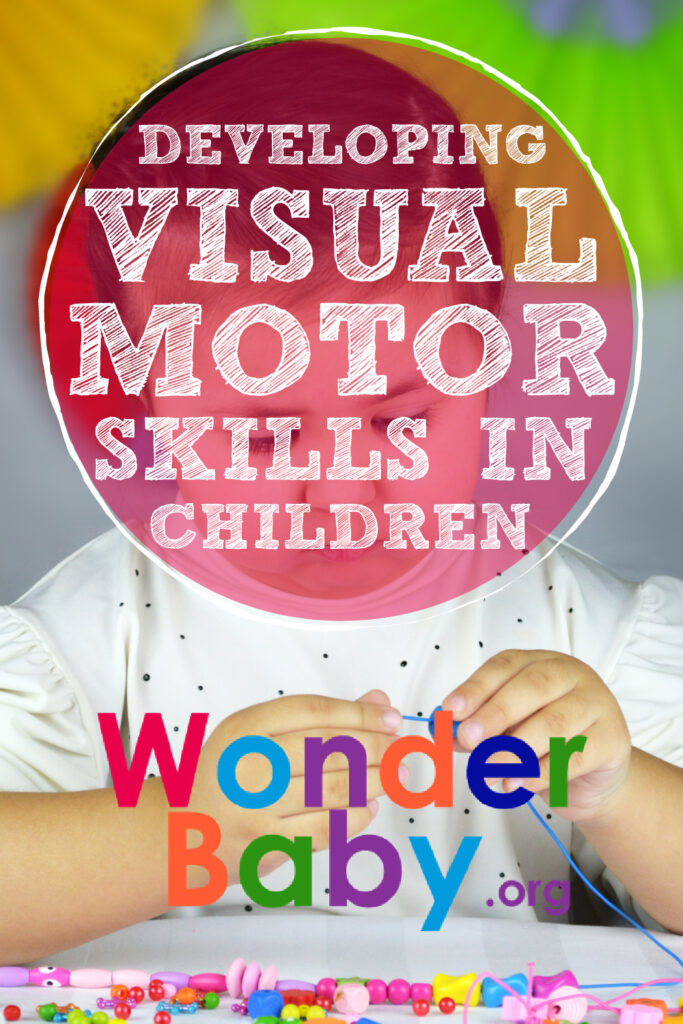
Related Posts
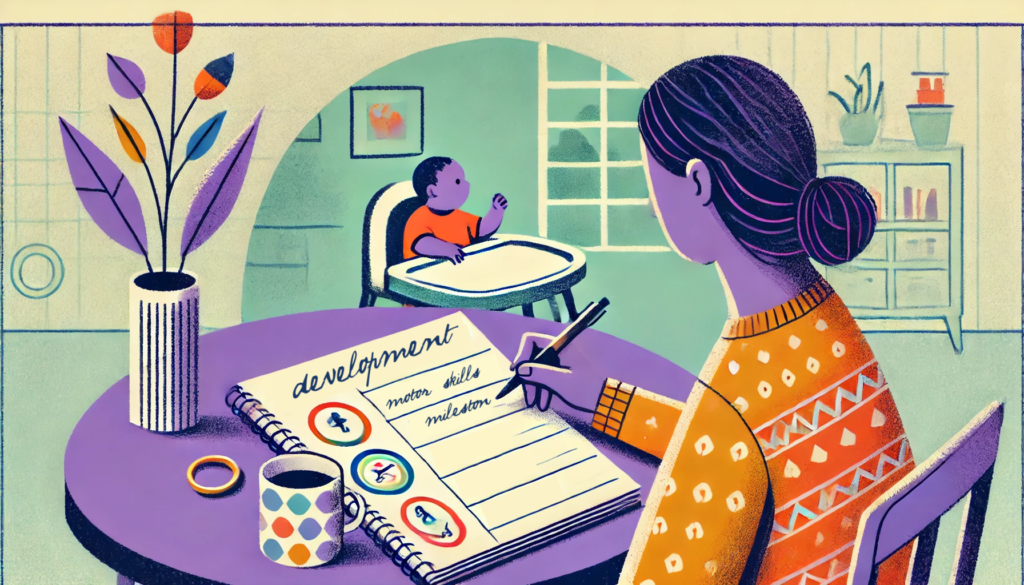
Development, Special Needs
How to Track Milestones for Developmentally Delayed Babies
Parents of developmentally delayed babies can explore practical tools and strategies to track milestones, celebrate progress, and support their child’s unique developmental journey.

Fine and Gross Motor
5 Alternatives to Tummy Time for Babies with Motor Development Challenges
Does your baby struggle with tummy time due to motor development challenges? These alternatives to tummy time will offer the same benefits.

Development
Should Twins Share a Room?
Wondering if your twins should share a room? We’ll explore the pros and cons of room-sharing for twins right here before you make your decision.